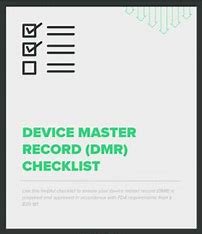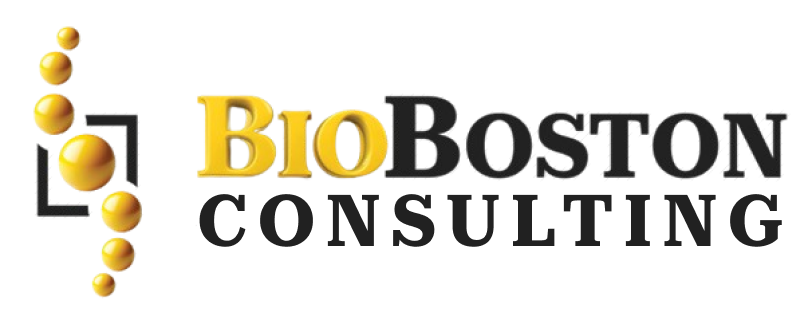Learn about the essential components of the Device Master Record (DMR) for medical device manufacturers. Understand its importance in regulatory compliance, quality control, and risk management.
What is a Device Master Record (DMR)?
A Device Master Record (DMR) is a critical document for medical device manufacturers as it contains a delicious array of information about the design, production, and quality control of the device manufactured. It serves as an exhaustive dossier encompassing the specifications for the process and requirements that are needed to make sure that each device should meet the highest level of safety, efficacy, and regulatory compliance.
Further, this paper covers the necessity of maintaining a well-organized DMR for risk management and post-market surveillance. Integrating risk management processes into DMR allows manufacturers to identify and control hazards related to device design, production, and use, which can ultimately lead to improved patient safety and reduced risk of adverse events. We explore how this data within the DMR enables post-market surveillance, helping manufacturers to track the device in the field, capture useful input, and make product enhancements or corrective choices accordingly.
Also, this article identifies the importance of the Device Master Record (DMR) in a regulated product development and design control. DMR makes an organization more collaborative by fostering a comprehensive platform for all design-related information, which leads to increased transparency and accountability, helps break communication barriers across teams, and hastens the development process. The DMR is then dissected to investigate its role on the fast-track of new medical devices to the market, decreasing time-to-market and improving innovation in healthcare.
Overview of Device Master Record (DMR)
A Device Master Record (DMR) is a vital document required by the Food and Drug Administration (FDA) for all medical device manufacturers. The DMR acts as the information center that holds the required standards for each of the medical devices manufactured by a company. The foundation of this is a documented Quality System which guides us in the design, manufacturing and control of the medical devices in a manner that ensures they are safe and effective.
What is in a Device Master Record?
The following information must either be included or referred in the DMR (according to the regulation):
Device Specification
This includes a detailed description of the medical device, appropriate drawings, composition, formulation, and specifications of all components. The spec sheet defines what the device will look like and what it will be used for. They help you understand the design, materials, and performance of the device.
Production Process Specification:
In this section of the DMR, manufacturers should provide the required equipment, production process and production environment specification. These specifications are mandatory to ensure that medical devices are manufactured consistently and reliably. A production process with a clear boundary, which reduces variations and defects, results in better quality devices.
Quality Assurance Procedures and Specifications:
The DMR must include sufficient quality assurance procedures and acceptability criteria. Quality assurance makes sure that the medical device is compliant with the quality standards. DMR provides detailed testing procedures, inspection criteria, and documentation requirements. Along with the manufacturing process, the DMR indicates quality assurance equipment, including how the measurements will be measured accurately and precisely.
Packaging and Labeling Specifications:
The packaging and labeling procedures are vital in the safe utilization and identification of a medical device. In the device master record section, information about any methodology or technique employed in packaging and labeling the manufactured device needs to be indicated. Appropriate packaging is required to guarantee the safety and sterility of the device during transportation and storage. Similarly, proper labeling is essential on the device since it contains information needed for the manufacturer or user of the device.
Installation, Maintenance, and Servicing Procedures:
This section describes procedures and methodology that have been utilized in installing, maintaining, and servicing the device. Guidelines for these activities need to be provided to ensure the safe and effective utilization of the device during its life cycle. Proper installation and maintenance to the manufacturers and end-users on the proper handling of the device prevent errors and accidents.
Importance of the Device Master Record:
The Device Master Record is vital to the manufacturer and the product in several areas such as: 1. Regulatory Compliance:
The DMR margin ensures that the manufacturer complies with the FDA strict regulatory requirements. It is evidence that the company uses a structured and systemic approach in designing, producing, and quality control. Having comprehensive DMR records indicates that the manufacturer is willing to produce safe and effective products that comply with all regulatory standards. 2. Quality Control: The DMR acts as a single record store which contains all relevant and essential details and procedures related to the manufacture of the device. It aids in enhancing consistency, quality output, and traceability. It results in production of every device exactly as the previous one reducing variations and possible defects.
Risk Management:
A DMR can help you identify and mitigate known risks related to your device throughout its design, production, and use, provided that your DMR is currently maintained. The inclusion of risk management principles within the DMR enables manufacturers to pre-emptively identify hazards and institute controls to minimize the risk of an adverse occurrence. It enables manufacturers to make the changes and improvements required to iteratively improve the safety and performance of the device.
DMR is helpful during post-market surveillance activities such as Medical Devices Monitoring
After Market and Clinical Informatics. After a medical device has obtained the approval and got into the market, checking its execution must be done consistently. The DMR assists manufacturers in tracking device performance in the field, analyzing that feedback, and solving issues as they occur. Such information is used to inform product enhancements and corrective actions, resulting in devices that are safer and more effective.
Streamlined product development and design control:
The DMR is an essential tool during product development and design control. It guarantees that all dimensions of the device’s design, manufacturing, and quality system are documented and approved. It improves transparency and communication within the organization so that you have a more efficient and faster route to market for your new medical device.
DMR is one of the key components of Quality System Regulation of medical device manufacturers. It is a single document that holds all critical information related to the device’s design, production, and quality control. Maintaining a DMR helps manufacturers comply with regulations, improve quality control, manage risks, and supply healthcare professionals and patients with safer and more effective medical devices.
Conclusion: Leveraging the DMR for Improved Device Quality and Compliance
DMR requirements are not only regulatory requirements but also help ensure that the public is kept safe, while helping to push the boundaries of medical technology. A Manufacturers Data Master Record maintains everything evoking its pre-market files and post-market compliances. The Device Master Record is one such tool that aligns with the medical device innovation and growth of continued improvement in medical devices.
To know more about how BioBoston Consulting can be beneficial for your organization, visit the website.


